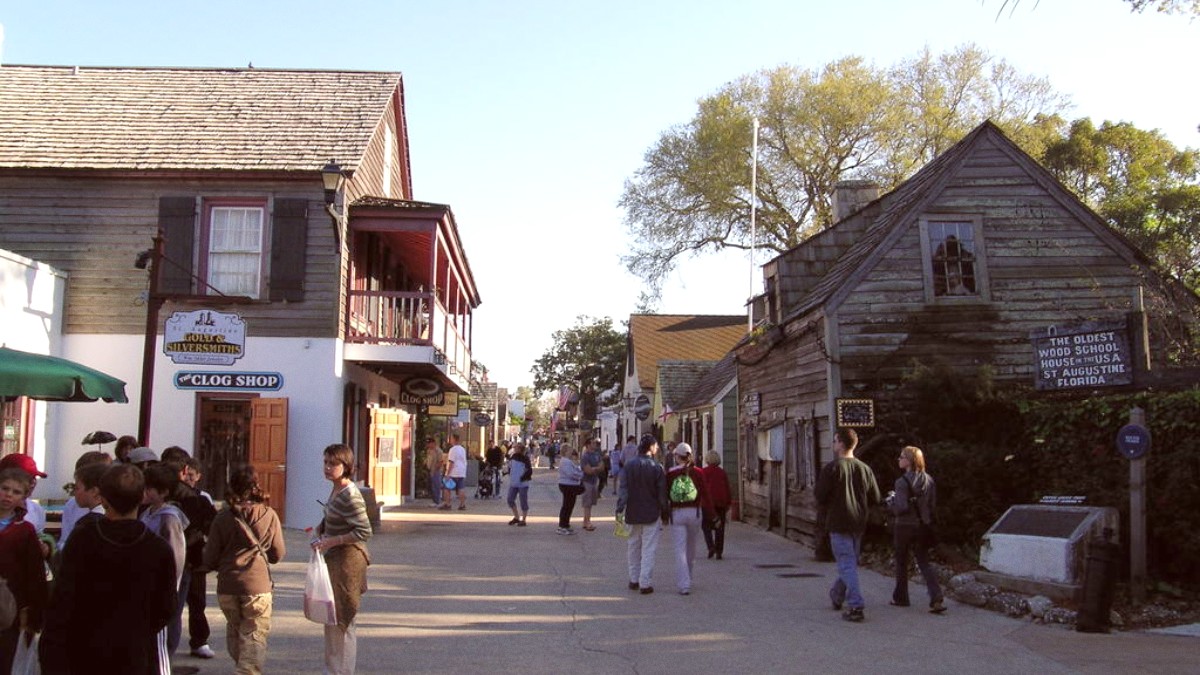
Florida, USA
You will find imposing forts, grand Gilded Age architecture, and tranquil beaches here. Prepare to discover a destination rich with stories, natural beauty, and inviting Southern hospitality.
The late 19th century saw industrialist Henry Flagler transform St. Augustine. He extended his Florida East Coast Railway and built grand hotels, shaping the city's modern identity. His masterpiece, the Hotel Ponce de Leon, built in 1888, now houses Flagler College. This architectural marvel, with its Spanish Renaissance style and stunning Tiffany stained glass windows, set a new standard for luxury resorts.
He also built the Hotel Alcazar, now the Lightner Museum, and the Flagler Memorial Presbyterian Church, solidifying St. Augustine's place as a premier tourist destination.
St. Augustine sits on the northeast coast of Florida, centrally located along the Atlantic Ocean. Its unique position on a narrow peninsula, bordered by the Matanzas River to the west and the Atlantic Ocean to the east, shaped its history and current character. The city's mainland section holds the historic downtown.
East of the river, Anastasia Island forms a natural barrier separating the city from the open Atlantic. This barrier island protects the mainland from the direct impact of ocean storms while offering miles of pristine, wide sandy beaches. These beaches, including St. Augustine Beach and Vilano Beach, provide opportunities for relaxation, swimming, surfing, and wildlife observation.
Choose the mainland for historic sites or Anastasia Island for beach access.
This iconic bridge connects the historic downtown and Anastasia Island.
The city's flat topography encourages walking and cycling, especially in the historic core.
Be aware of tropical storms during hurricane season (June-November); local guidance is clear.
The unique shell rock, coquina, shaped the enduring structures like Castillo de San Marcos.
St. Augustine is an unique place in American history, predating Plymouth Colony by over half a century. The Timucua people were the main inhabitants when the Spanish first explored Florida. Their rich culture and knowledge of the land shaped the early interactions with European settlers.
The modern history of St. Augustine began on September 8, 1565, when Spanish explorer Don Pedro Menéndez de Avilés founded the city. This establishment made St. Augustine the oldest continuously inhabited European-established settlement in what would become the United States. Construction of the Castillo de San Marcos, a massive coquina fortress, began in 1672 and successfully defended the city against numerous sieges.
In 1763, Spain ceded Florida to Great Britain, making St. Augustine the capital of British East Florida. It remained loyal to the British Crown during the American Revolutionary War. Florida reverted to Spanish control in 1783. The United States acquired Florida from Spain in 1819 through the Adams-Onís Treaty, officially taking possession in 1821, ushering in its American era.
Visitor Tip: Consider a guided historical walking tour early in your visit. These tours often give a good overview of the city's layered history and help you orient yourself.